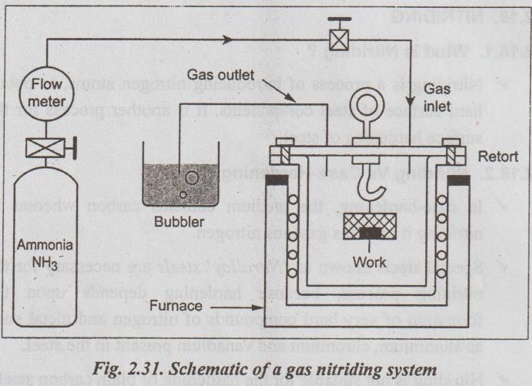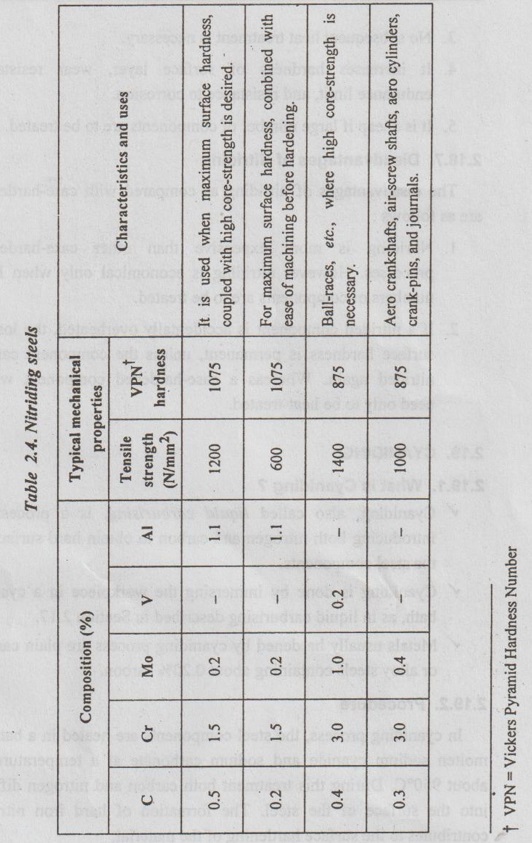Nitriding is a process of introducing nitrogen atoms, to obtain hard surface of steel components.
NITRIDING
1. What is Nitriding?
✔ Nitriding is a process of introducing nitrogen atoms, to obtain hard surface of steel components. It is another process for the surface hardening of steel.
2. Nitriding Vs Case-Hardening
✔ In case-hardening, the medium contains carbon whereas in nitriding it contains gaseous nitrogen.
✔ Special steels known as 'Nitralloy' steels are necessary for the nitriding process, because hardening depends upon the formation of very hard compounds of nitrogen and metal such as aluminium, chromium and vanadium present in the steel.
✔ Nitriding is not suitable for the hardening of plain carbon steels, as iron nitrides could be formed to a considerable depth below the surface of the steel. This embrittles the material.
3. Procedure
Prior to being nitrided, first the workpieces are heat-treated, to produce the required properties in the core.
In nitriding, the steel parts are heated and maintained at about 500°C for between 40 and 100 hours. The treatment takes place in a gas-tight chamber through which ammonia gas is allowed to circulate. Some of the ammonia decomposes, releasing single atoms of nitrogen.

This atomic form of nitrogen (N) is absorbed on the surface of steel component. The resulting nitride case can be harder than carburised steels.
✓ A typical basic nitriding setup is illustrated in Fig.2.31.

Note
Ordinary 'atmospheric' nitrogen is not suitable for nitriding process. Because it exists in the form of molecules (N2) which would not be absorbed by the steel.
4. Nitriding Steels
Table 2.4 shows the composition, characteristics and uses of a some nitriding steels.
5. Applications
The nitriding process is used in the production of machine parts such as aircraft engine parts, aero engine cylinders, aero crankshafts, crank pins, journals, valve seats, gears, bushings, etc. (Table 2.4)
6. Advantages of Nitriding
The advantages of nitriding over case-hardening are as follows:
1. An extremely hard surface is formed.
2. The treatment is conducted at comparatively low temperatures, minimising cracking and distortion.

3. No subsequent heat treatment is necessary.
4. It increases hardness of surface layer, wear resistance, endurance limit, and resistance to corrosion.
5. It is cheap if large number of components are to be treated.
7. Disadvantages of Nitriding
The disadvantages of nitriding as compared with case-hardening are as follows:
1. Nitriding is more expensive than other case-hardening processes. However nitriding is economical only when large numbers of components are to be treated.
2. If a nitrided component is accidentally overheated, the loss of surface hardness is permanent, unless the component can be nitrided again. Whereas a case-hardened component would need only to be heat-treated.
No comments:
Post a Comment